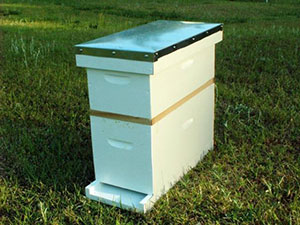Backyard Beehives

A nucleus beekeeping colony, commonly called a "nuc."
Photo: A. Ellis, UF/IFAS.
A single bee colony can contain up to 60,000 bees, including worker bees, drones, and a queen. Each type of bee serves a specific role. The drones mate with the queen to produce new worker bees, and the worker bees perform all of the labor tasks like gathering pollen and nectar from flowers.
Keeping honey bees isn't hard, but it does require some preparation and special equipment. You can usually purchase everything you need, including bees, for two to three hundred dollars. Check the phonebook or try searching online for beekeeping suppliers in your area.
New hives should be established in the spring; use the "down" days of winter to do all of your research and planning. Talk to your county Extension office, or consider enrolling in the University of Florida Bee College. By this time next year, you could be enjoying a well-pollinated garden, and the sweetness of local honey.
Florida Honey
A natural sweetener made by bees, honey has been enjoyed by humans as far back as the ancient Egyptians. In Florida, we're lucky to have many kinds of honey, and there's something for every palate.
The color and flavor of honey can vary widely, depending on what flower the bees use for their nectar source. Orange blossom honey is light-colored and mild, with a fresh scent and a light citrus taste. Tupelo honey is produced only in the Florida Panhandle, and is heavy and sweet. Mango honey and palmetto honey come from South Florida, as do lesser-known types like seagrape and mangrove.

